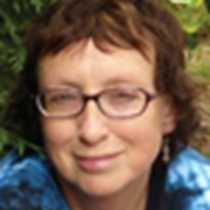Phnom Penh
It is 6:30am and the Jahan’s engines are starting up, signalling that we will be moving up river to dock on the bank of the Mekong in Phnom Penh, the capital of Cambodia.
This is a full day with a wide range of experiences. Guests are organized for the cyclo ride past the old colonial Post Office, via Wat Phnom, the sacred hill and historical centre of the city. We continue through lively markets and finally back along the Tonle Sap River, ending right before the Royal Palace, marked by its magnificent yellow tiled, upturned roofs with soaring spires. The Throne Hall is under reconstruction and closed for visits, but there are numerous other buildings to explore, a highlight being the Silver Pagoda, named because of its silver tiled floor. Numerous Buddha statues of different sizes are on display in this building, but the most beloved statue is the jade Buddha, known as the Emerald Buddha, which looks luminous high up on its stand. Today Cambodia’s Buddhists are celebrating the birthday of the Buddha, and this is the year 2565. It is an auspicious and festive day, on which people visit temples and liberate birds and turtles.
The walls surrounding the compound of the Silver Pagoda are painted in great detail with continuing scenes from the most beloved Hindu epic the Ramayana, known as the Reamker in Cambodia. On the way out there are displays of various objects used by the royal family, as well as photographs of former king Norodom Sihanouk.
After a brief rest stop we take the bus to the other side of the Royal Palace complex, where the National Museum is located, established almost a hundred years ago by the French.
Hindu and Buddhist statues, some in bronze but mainly in stone, form the highlight. The collection is fabulous coming from various early temples in Cambodia, but mainly from the temples of the 10th-early 13th century Angkor site.
We have a brief city tour looking at the oversized Naga world gambling paradise, with Prime Minister Hun Sen’s compound strategically located opposite the Independence Monument on the way to lunch.
It is time for some serious reflection visiting the Choeung Ek genocide site to the South of Phnom Penh, one of more than 300 sites that have been identified as “killing fields.” Is it really necessary to have a tourist shop on this solemn site with so many markets and shopping opportunities in Phnom Penh? Personally, I find the visit to Tuol Sleng, also known as S-21, a former high school used as detention and torture centre during the Khmer Rouge period from 1975 to early 1979, more appropriate to reflect on the Khmer Rouge period. The classrooms are stark and empty where once people were shackled together lying on the floor. There were only 7 survivors, all artists, who were deemed useful to Angka, the Organization. One of them, the painter Vann Nath, who stood as witness during the Khmer Rouge Tribunal trial of comrade Duch, died recently. The Archives of the Tuol Sleng Genocide Museum were inscribed in 2009 on the UNESCO Memory of the World register to honour their historical importance.
Back on Jahan we return for an excellent lecture by Dr. Jean Michel Filippi on the recent history of Cambodia from 1953-93. It is a lively and informative presentation, which reflects his great knowledge of the subject.
To close the day we have an elaborate BBQ buffet on the Terrace Deck of Jahan, while viewing a beautiful and fun performance of court and folk dances accompanied by instrumental music and dreamlike songs.




